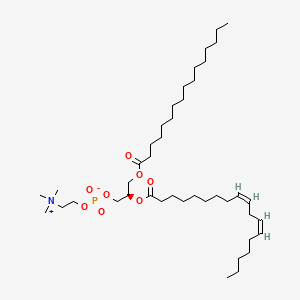| Authors | Title | Published | Journal | PubMed Link |
|---|---|---|---|---|
| de Freitas RM et al. | Neurochemical changes on oxidative stress in rat hippocampus during acute phase of pilocarpine-induced seizures. | 2010 | Pharmacol. Biochem. Behav. | pmid:19800361 |
| Sidahmed-Adrar N et al. | Interaction between non-anionic phospholipids and cytochrome c induced by reactive oxygen species. | 2010 | Chem. Phys. Lipids | pmid:20398641 |
| Tabet F et al. | The 5A apolipoprotein A-I mimetic peptide displays antiinflammatory and antioxidant properties in vivo and in vitro. | 2010 | Arterioscler. Thromb. Vasc. Biol. | pmid:19965776 |
| Zhang Y et al. | Therapeutic effects of anticoagulant agents on preeclampsia in a murine model induced by phosphatidylserine/phosphatidylcholine microvesicles. | 2009 | Placenta | pmid:19837457 |
| Peshavariya H et al. | Reconstituted high-density lipoprotein suppresses leukocyte NADPH oxidase activation by disrupting lipid rafts. | 2009 | Free Radic. Res. | pmid:19521892 |
| Mazari A et al. | Ultraviolet A-induced peroxidation of phosphatidylcholine in unilamellar liposomes. | 2009 | Biosci. Biotechnol. Biochem. | pmid:19420698 |
| Kumura N et al. | Different behavior of artemisinin and tetraoxane in the oxidative degradation of phospholipid. | 2009 | Chem. Phys. Lipids | pmid:19426722 |
| Vernier PT et al. | Electroporating fields target oxidatively damaged areas in the cell membrane. | 2009 | PLoS ONE | pmid:19956595 |
| Theofilopoulos S et al. | Novel function of the human presqualene diphosphate phosphatase as a type II phosphatidate phosphatase in phosphatidylcholine and triacylglyceride biosynthesis pathways. | 2008 Nov-Dec | Biochim. Biophys. Acta | pmid:18930839 |
| Ross J et al. | Fatty acid synthase inhibition results in a magnetic resonance-detectable drop in phosphocholine. | 2008 | Mol. Cancer Ther. | pmid:18723500 |
Soybean phospholipid
Soybean phospholipid is a lipid of Glycerophospholipids (GP) class. The involved functions are known as 5-(carboxyamino)imidazole ribonucleotide mutase activity, Laser-generated electromagnetic radiation, physiological aspects, Genetic Translation Process and Saturated. Soybean phospholipid often locates in Head, Tissue membrane, Membrane, extrinsic to membrane and Cytoplasmic matrix. The associated genes with Soybean phospholipid are THEMIS gene, C10orf27 gene and G-substrate. The related lipids are Unilamellar Vesicles, LYSO-PC, Phosphatidic Acid, Lysophosphatidylcholines and palmitoyl lysophosphatidylcholine.
Cross Reference
Introduction
To understand associated biological information of Soybean phospholipid, we collected biological information of abnormalities, associated pathways, cellular/molecular locations, biological functions, related genes/proteins, lipids and common seen animal/experimental models with organized paragraphs from literatures.
What diseases are associated with Soybean phospholipid?
There are no associated biomedical information in the current reference collection.
No disease MeSH terms mapped to the current reference collection.
PubChem Associated disorders and diseases
What pathways are associated with Soybean phospholipid
There are no associated biomedical information in the current reference collection.
PubChem Biomolecular Interactions and Pathways
Link to PubChem Biomolecular Interactions and PathwaysWhat cellular locations are associated with Soybean phospholipid?
Visualization in cellular structure
Associated locations are in red color. Not associated locations are in black.
Related references are published most in these journals:
| Location | Cross reference | Weighted score | Related literatures |
|---|
What functions are associated with Soybean phospholipid?
Related references are published most in these journals:
| Function | Cross reference | Weighted score | Related literatures |
|---|
What lipids are associated with Soybean phospholipid?
Related references are published most in these journals:
| Lipid concept | Cross reference | Weighted score | Related literatures |
|---|
What genes are associated with Soybean phospholipid?
Related references are published most in these journals:
| Gene | Cross reference | Weighted score | Related literatures |
|---|
What common seen animal models are associated with Soybean phospholipid?
There are no associated biomedical information in the current reference collection.
